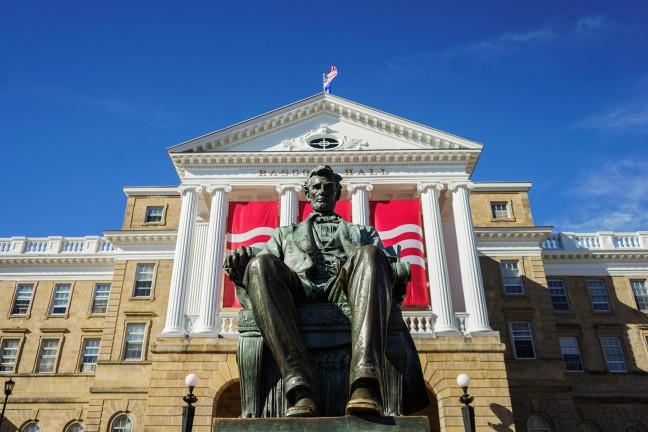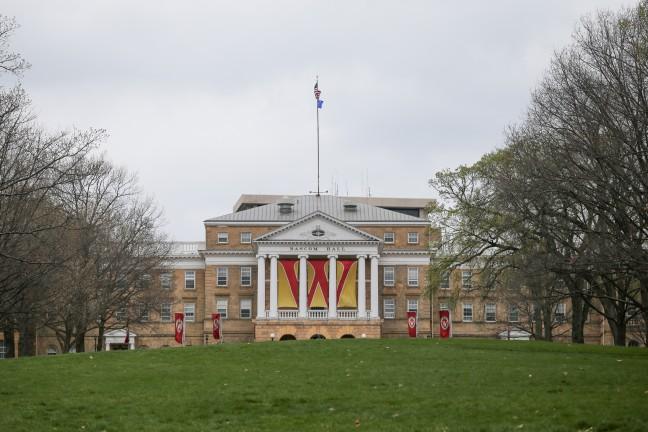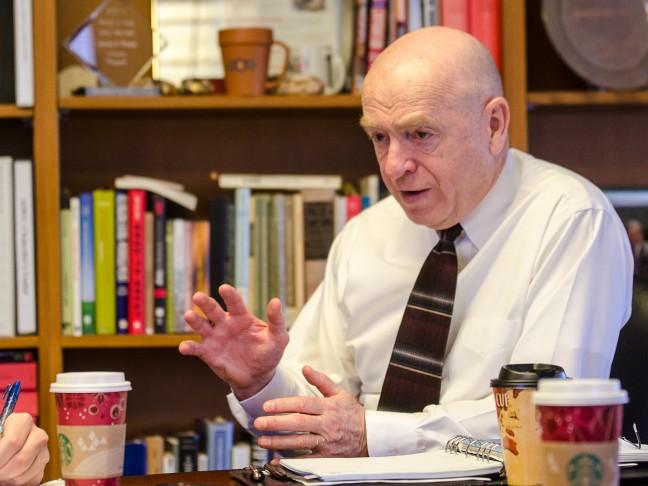The number of high school graduates in the state of Wisconsin is set to hit an all-time low since the year 2000, sparking a wave of concerns regarding recruitment and finances from University of Wisconsin system schools.
According to a December 2017 report by University of Wisconsin-Madison’s Applied Population Lab, 64,065 students are projected to be graduating from the state’s high schools in 2019-20, the lowest number of students since the 1999-00 school year. This is an 8.7 percent decrease since the 2008-09 school year, when 70,140 students graduated.
In order to calculate this data, the researchers utilized the cohort-component method, moving students annually through the K-12 school system until they either graduated or left school, according to the report.
This decrease in the number of students hasn’t appeared to be an issue for UW-Madison, the system’s flagship institution, according to UW-Madison’s fall 2018 enrollment report.
Meredith McGlone, a UW spokesperson, said there is no expected decline in enrollment or tuition revenue because the school attracts many out-of-state students.
“In 2015, in response to this trend, the UW System Board of Regents lifted the cap on out of state enrollment at UW–Madison in exchange for a commitment from the university to enroll at least 3,600 Wisconsin students in each incoming class,” McGlone said. “This means that the university will actually be enrolling a growing portion of the Wisconsin high school graduating class going forward.”
However, this is not necessarily the case for many other UW System schools, which draw a much smaller out-of-state base and rely on in-state students for their applicant pool.
Corey Sjoquist, Director of Admissions at UW-La Crosse, said their in-state versus out-of-state rates have remained at a relatively stable 80 to 20 ratio for many years. Sjoquist, however, said in-state students were his priority.
“We, as a public institution, have an obligation to serve the students of Wisconsin,” Sjoquist said. “We’re going to work hard to make sure we enroll a strong number of Wisconsin students in the future.”
Sjoquist said the school has been monitoring graduation data for years now, and while it is concerning, it hasn’t affected the institution’s admissions rates and class size. UW-La Crosse just had one of the highest freshman enrollment rates in the history of the institution, according to News 8.
He added that while UW-La Crosse had a dedication to the state of Wisconsin, they had also expanded efforts to the wider Midwestern market.
“We certainly have adjusted our recruitment efforts in light of recent data, but we have adjusted it each and every year,” Sjoquist said. “Recently, we’ve been spending time in Minnesota along the border. It complements our students in-state, so we help our main market — the Midwest.”
UW-La Crosse has also been recently heralded for their high retention rates. At 86 percent, the campus retains and graduates the highest percentage of its students compared to all other comprehensive institutions in the UW system.
Heather Pearson, the Associate Director of Admissions at UW-Eau Claire, said the institution has noticed some changes in their admissions and recruitment as well.
“We know that our applications are down a little bit from last year,” Pearson said. “The number of admitted students is about even, and certain academic criteria — ACT/SAT and rank in class — are very similar to last year. This may mean that students are doing more research before they apply, and the students who apply to UW-Eau Claire are those who have a strong likelihood of admission.”
UW-Eau Claire, similarly to UW-La Crosse, draws mostly from the Midwest. UW-Eau Claire’s biggest student markets are Wisconsin, Minnesota and Illinois, Pearson said.
Pearson said UWEC hasn’t made any major changes in their admissions process, but her priority was getting the information students cared about in the admissions process to them. She said the institution has developed new campus tours, with a focus on the most popular majors, along with more streamlined ways of getting information on AP/IB and other forms of advanced credit.
Pearson added that financially, UW-Eau Claire would need some sort of backing in the face of current government-imposed tuition freezes, Governor-elect Evers’ plan to further lower tuition and potentially smaller incoming class sizes.
“If tuition remains frozen, the hope is that we’ll see some additional funding from the state government,” Pearson said. “We want to continue to give students small class sizes and individual attention from their professors, along with opportunities to participate in high impact practices. The key to doing this is having a healthy budget for resources.”
UW System to assess, adjust employee compensation in $900,000 study
UW-Eau Claire has made multiple enumeration requests to the UW System for 2019-21. It includes almost $280 million for projects such as work on a science/health building and utility replacements, according to the report.
Sjoquist, like Pearson, discussed concerns regarding funding.
“As campuses become more reliant upon tuition, it could be very difficult to provide the level of education our students are expecting,” Sjoquist said. “If there is a lowering of tuition, it would be helpful to have help from other areas, be it the state government, so students can get what they need, and then contribute it back as citizens of the state of Wisconsin.”
In August of this year, UW-La Crosse presented its 2019-21 budget recommendations to the UW System Board of Regents. Five projects, totaling about $202.2 million, were recommended.
Sjoquist, however, made it clear that his primary concern is high school students heavily consider all their in-state options, whatever that UW institution may be.
According to data provided by the UW System, around a third of Wisconsin high school students enroll in a UW institution following graduation.
“I’ve worked in higher education for just over 20 years. There have been a lot of changes in the UW System in that time. Having said that, I still firmly believe we’re one of the top educational systems in the country,” Pearson said. “I know there may be more financial challenges in our future, but I’m confident we’ll continue to deliver a high-quality education.”























